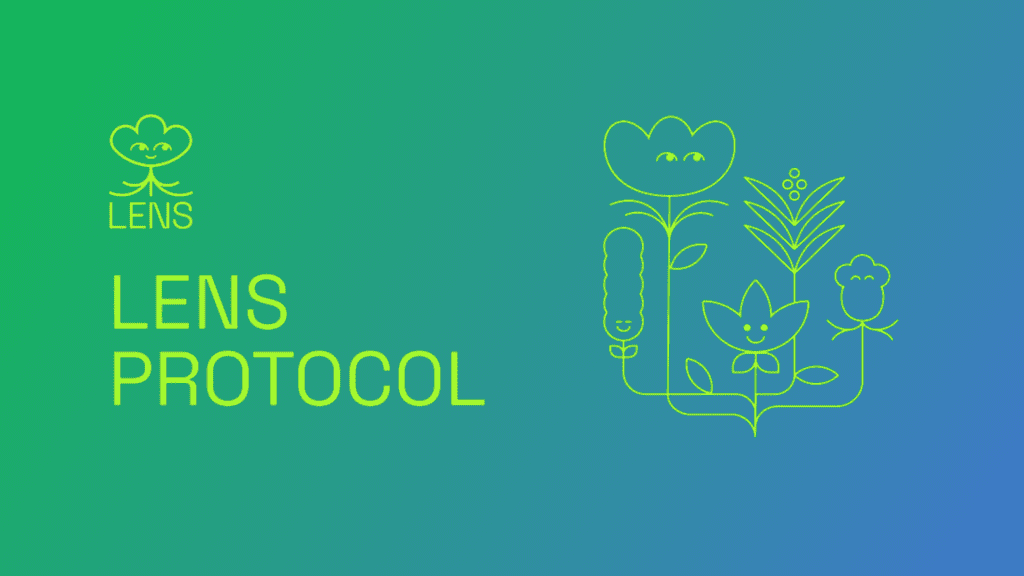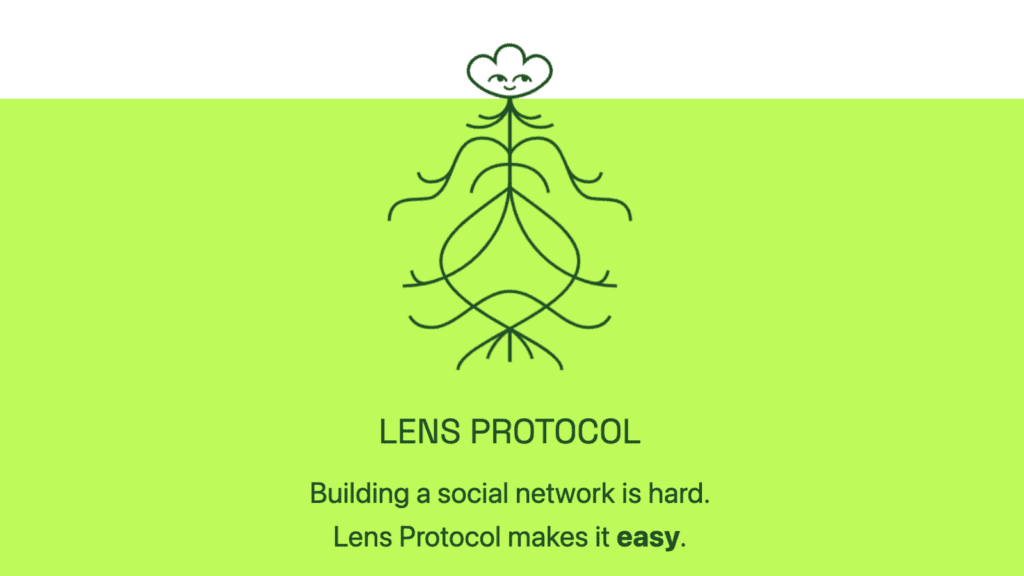You Don’t Own Your Social Media Profile. Your Social Media Profile Owns You.
Social Media is broken. You already know that you are the product:
- Your attention is being sold to the highest advertising-bidder.
- You aren’t paid for your content – even though:
- your content makes the platform valuable
- $Billions in Ad revenue are earned every single year
- There are only 2 ways to grow followers, you must:
- create content for free (pay with your time & skill)
- pay for ads (pay with money)
- You don’t on your content, data or audience – You can be kicked off:
- without warning,
- because of a random set of rules (made by a small group of people)
- without transparent reasons why you were kicked off
- with no recourse or way to solve the issue

Social media doesn’t serve you. Social media serves advertisers, who pay for ads (which serves shareholders).
The problem is YouTube, TikTok & Instagram have huge network effects. These barriers prevent new apps from competing (which would help apps progress towards serving users & creators).
Why Should You Care: Lens Value Proposition
- Lens gives value back to users & developers (unlike web2 social which gives value back to shareholders).
How You Benefit From Lens Disrupting Web2 Social Media?
Web3 social media is easier to grow and more rewarding. You get paid what you deserve. And you can’t lose your income overnight because an unknown moderator enforced an unknown rule.
- Benefits If you are a User:
- Easier to grow a quality audience
- Easier to monetize & earn revenue
- Protection to Avoid losing your audience
- Benefits If you are a Developer:
- Easier to build a more apps & better-quality apps (because backed code is done for you)
- Easier to get users because you tap into the protocol audience
- Easier to monetize because your apps get traction, algo-fit & integration
- How Lens Can Outcompete Web2:
- Lens breaks down web2 Social Media moats, allowing equal opportunity to new apps:
- New apps: supports innovation & use-cases (as oppose to web2 moats which purposefully block innovation through their competitive moats)
- More apps: mean apps compete against each other. This competition serves users – allowing more useful to rise to the top
- Web2 can’t compete with Lens benefits, unless Web2 gives up its primary source of income (ad revenue) – which seems unlikely, given shareholder expectations.
- Lens innovates faster than web2, because they have crowdsourced growth by creating an ecosystem of apps. I.e. YouTube have one Team, Lens has an ecosystem of Teams building tech that is composable (developer 2 can start where developer 1 left off).
- Lens has self-reinforcing effects (like integrating every app & shared audience) which make Lens more useful compared to web2 (for creators, users & devs)
- Lens breaks down web2 Social Media moats, allowing equal opportunity to new apps:
The Problem
Facebook/Meta earned $115 billion from ads last year.
How much ad revenue did Facebook share with you, to make every post you made the whole year?
Your content makes their Web2 platform so valuable.
Let’s be real, Facebook are terrible at making their own content:

What Is Lens Protocol?

Lens Protocol is a network for social media apps. Including:
- Building blocks (primitives) that help developers easily build better social media apps
- A network connecting these social media apps
- A Protocol (a system of rules) that helps users in ways that web2 can’t compete
The end-game for Lens tells you everything:
Lens Protocol is building an ecosystem of social media apps, that serve users & developers (instead of serving shareholders, like web2 Facebook).
How is Lens Designed to Outcompete Web2?

Lens runs on Polygon’s Proof-of-Stake Layer 2 which is an:
- Environmentally-friendly sidechain
- Allows fast & low-cost transactions.
The design of Lens Protocol is:
- Decentralized: helps you avoid being deplatformed (you own your data & audience)
- Open-source & composable: creates quicker & more-resilient growth of the ecosystem
- Integrated: creates more useful apps, that can also be combined like Lego to benefit users
These design features create significantly more value for users and developers (compared to web2), let’s explore how.
How Developers Benefit From Lens

Building a social media app to compete with web2 (YouTube, TikTok) is a massive challenge.
Lens makes it exponentially easier for developers to build better apps:
Web3 Helps Developers Solve “The Big Backend” Problem
In order to compete with Web2, new Social Media apps must do large amounts of backend development (to support many front-end use cases.)
Lens protocol has already built most of the backend (with even more functionality than any individual Web2 app).
This saves a huge amount of time, work & cost for developers.
Developers can now commit most of their time & efforts on the two areas that add the most value to an app:
- Front-end development
- Algorithm development
This allows developers to:
- Focus on adding value where it matters (doing what they do best).
- Develop more apps & better-quality apps (because they can focus on less areas).
Web3 Helps Developers Solve “The Cold Start” Problem
Building great tech doesn’t matter if you don’t have users. Imagine using asocial app with no one else on it.
Social networks are valuable because they are social i.e. more people increase the value of the network.
Lens protocol already has a pool of people across the Lens ecosystem. Lens also allows users to move freely across all apps. This means new apps can tap into the existing protocol audience.
This is critically important because it helps apps get people trying out their apps. Good apps have a much higher discovered (as oppose to dying from no exposure).
Web3 Helps Devs Build & Monetize New Apps
Lens allows developers to build new types of apps that will be demanded, such as:
- Small app features & add-ons (these are quick & easy builds, like open-source templates)
- Yes, web2 has 3rd party app add-ons but these are constantly breaking because social media platforms’ code isn’t shared with the 3rd party developers & updates are done without notice. Web2 also randomly bans some 3rd party add-ons as part of their anti-competitive behaviour.
- Lens protocol is composable & apps are integrated with each other. This makes it easier for developers to build useful app features & integrations. The more useful, the more likely developers can monetize them. Lens is also decentralized, preventing any central group from banning apps.
- Build open-source algorithms
- Unlike web2 with closed-algorithms (that serve advertisers), Lens has open algorithms (that serve users). Lens allows user to choose algorithms like “positive actionable advice” (it’s like choosing a playlist on Spotify for your current mood)
- Developers can experiment with new algo’s & monetize them on the open mart because they improve the user’s social media experience & help them find more media.
- New payment mechanisms
- Web2 limits how you can monetize. Web3 allows all types of monetization to be applied to apps (e.g., pay per 10seconds viewed, pay per 2nd article read, price per country you live in)
- Web2 already has these methods but social media apps decide on only one method and then they heavily-control that method (for their benefit). In web3 these payment mechanisms are like Lego blocks where users can choose many different methods, users build up a basket of different payment types that suit their audience and offer.
Which leads us to a critical point: Lens benefits Developers (which ultimately benefits users as well):
- More apps
- Better quality apps (more relevant & useful to users)
- Apps are like Lego’s so users can piece together a custom bunch of apps to serve their unique needs
The overarching purpose: Serving end users, developers, creators and businesses. Instead of web2, which is lives to serve shareholders.
How Users Benefit From Lens

The “Social Promotion” Analogy
There’s a useful analogy called the Web3 “Social Promotion”:
In Web2 social media, users are like junior-employees at a company & the company is a social media platform.
- Employees work hard, serving the company, to earn a salary. The same way social media users work hard (making content), to serving Social Media platform, to earn followers. Companies rarely pay you fairly and the same is true for social media platforms.
- Companies (social media platforms) don’t like it when you work for other companies, they try and control you by limiting you to their company only.
- Companies can fire you if you don’t fit into their rules. Social Media platforms kick you off with no recourse.
- Moving companies is possible but it’s not always easy – especially when you have built up equity / locked bonuses (followers) – it often means sacrificing locked bonuses & benefits (leaving your followers on that platform, starting with no followers on a new platform).
Web2 social media has power over users, the same way companies have power over their employees.
In Web3 Social the whole dynamic is shifted: users are promoted to being the customer.
- Companies (social media platforms) work hard and compete to serve you.
- You can get products from multiple companies (social media platforms) & combine them to make a better experience for yourself.
- Companies fit into the customers rules/demands. Customer ‘fire’ companies: If a company (social media platform) doesn’t serve you, then you can easily move to another companies’ product
- Moving companies is easy and you keep your money (followers)
Web3 users have power over social media apps, the same way customers have power over companies.
Web3 Helps Users Earn Ad Revenue or Choose No Ads
You own your data, so you can choose to:
- Keep your data private (no ads)
- Receive ads and receive a portion of ad revenue, simply by posting the same content you already post This makes sense because content tis what makes the platforms valuable to ether users (and therefore to advertisers).
- Choose types of ads you don’t mind seeing (this helps you have a better ads experience and it also helps advertisers achieve better targeting)
Web3 Drives The Creator Economy
Monetization is Easier
- Built-in primitives give you more options to deliver value e.g., NFTs, crypto payment integrations, linked to dApps across GameFi, Music, DeFi etc
- You can monetize in any different way you want e.g., pay per 10second view, pay per country you’re in. You can explore & combine different options and find the optimal way to monetize your content (as oppose to web2 platforms which dictate methods of monetization or don’t allow monetization).
Growth is Easier
Because there is an open market of apps & algorithms, which creates:
- Tap into the pool of followers: across the whole Lens protocol ecosystem.
- More algorithms: more likely they will help you find followers for your unique profile
- Competition for algorithms: developers keep improving algorithms so they are current and user-focused (unlike web2 where they serve the platforms, advertiser & shareholders)
Content Quality is Better
- Apps can be pieced together like Lego’s: helping you serve unique followers with more suitable content and in a fully customizable format.
- Apps such as “repurposing content apps” work more effectively because all apps are integrated by the underlying protocol. So, you can spend the same effort and make more content that is more relevant
Web3 helps Users Avoid Being Deplatformed & Keep Your Followers
Imagine building an audience for years and losing all your content & followers overnight, with no warning. Because some random team enforced their rules, (without transparency or recourse!). This is even worse for people & businesses depending on your audience for income.
Web2 social media is the biggest living example of censorship and deplatforming. You are building on borrowed land.
Web2 owns your content & your followers. Web2 can cancel you anytime without you being able to do anything.
Web3 Decentralization gives you ownership: you get back what you rightfully built: your content & your audience
Avoid being deplatformed
- At the protocol level you can’t be deplatformed so even if web3 try web2 tricks, your followers will still be able to access you & your content.
- In web3 apps compete to serve you, so it is inevitable that some apps will be fully decentralized (across the tch stack), which implicitly means accommodating all types of world views without being able to ban people.
You take your followers with you
- If you want to move to another app, you keep all your followers & all your content (unlike web2 which own your followers on their siloed platform)
- This is an additional incentive for app builders to serve you, because you bring with your audience when you join their app
Web3 helps Users Avoid Toxic Media
Remember the last time you put on a Spotify / Apple music playlist. Maybe you choose “gym beats” or “focused work”.
Now consider logging onto social media and choosing an algorithm for the day. Such as “actionable investing advice” or “positive political views” maybe even “avoid mainstream news”.
Algorithms dictate what we see on our feeds. And let’s be honest, we spend hours scrolling through our feeds.
Web2 algo’s are private are designed to do only 2 things:
- Keep you hooked
- Serve advertisers
Web3 algo’s are open source and abundant. They will be purchased like a template on Shopify. The key benefit is to help you have a more constructive social media experience:
- Find media you actually want to see and,
- Avoid toxic media that has a negative impact on you or your families’ lives.
Web3 social is exciting.
Lens Protocol is leading the way.
End of Part 1
Part 2 (coming soon) will cover:

- Web2 Competition: Web2 can’t compete with Lens benefits, unless it gives up its primary source of income (unlikely with shareholder expectations).
- Web3 Competition: is fierce (DeSo has a head stat & Farcaster has big VC backing).
- Team: Tier 1 developers from AAVE
- Tech: Expect tier 1 (such as AAVE). L2 scaling also unlocks social dApps
- Community: controlled start, but demand already outweighs open supply of lens handles
- Narrative: web3 social media is arguably one of the strongest narratives currently.
- How can Lens Fail? Execution risk, smart contract risk, competition inside web3 and building the initial app ecosystem.
- The Lens ecosystem: single biggest make or break factor behind Lens’s future success



